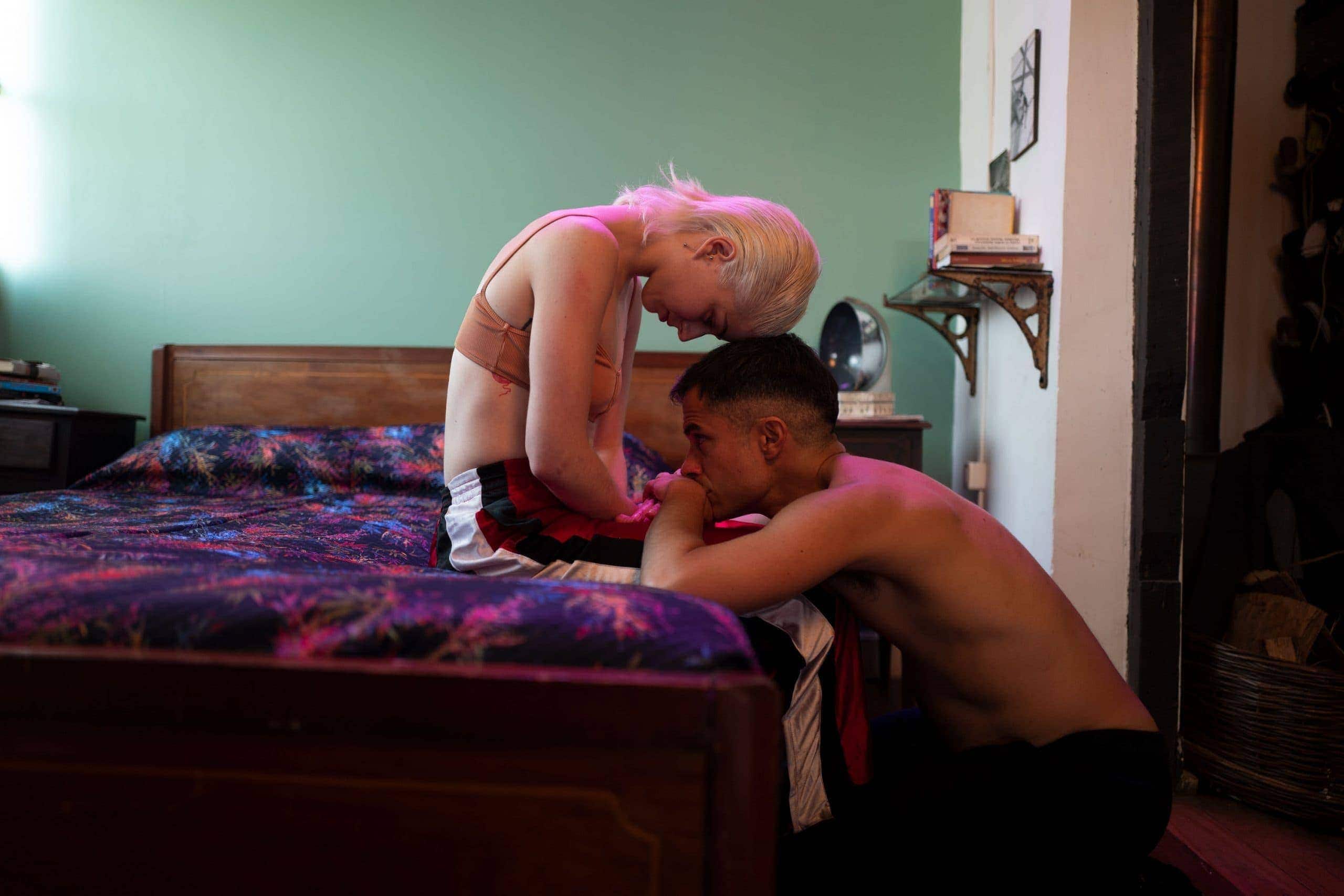
Following 2016’s Jackie, a biographical drama about Jackie O., Pablo Larraín returns with another strong female lead, trading glamour for grit, pearls and gloves for cropped leopard-print tops. Ema is the story of a young dancer in a reggaeton troupe. Setting out to get her son back, she has two modes: seduce and destroy.

I’ve been convincing friends to watch Ema not with its premise, but a few scattered words: reggaeton, dancing, flamethrowers. Scored by Nicholas Jaar. Fair enough, they unanimously respond. Press Play.
This is a film as individualist as its central character: anarchic, and dancing without apology to its own pulsating tune, Ema lays out its own playbook within the first few scenes. We open with flaming traffic lights, and pull back to see Ema (Mariane Di Girolamo) calmly watching on. With slicked back peroxide hair and a flamethrower strapped to her back, her brand of sociopathy is a cinematographer’s dream – visual odyssey will have been privileged over linear emotional growth. Waxing-waning synth drones, as Ema walks off into the rising morning light.
ArrayThe next day, she visits a social worker, asking after her adopted son Polo. ‘He’s not your son. Not anymore,’ the social worker says. (Dialogue throughout is marked by cruel honesty hurled like the blunt side of an axe.) ’Know what you have left?’ the social worker continues: ‘Dyed hair and a shit husband.’

It’s true. Ema already has the vestiges of a life in the charged years of her twenties. We soon learn that she and her stern partner and choreographer Gaston (Gael Garcia Bernal) couldn’t cope with Polo and returned him to the care system. As heartless as it sounds, you find yourself thinking it’s for the best. Polo’s way of ‘acting out’ involves badly burning Ema’s sister and stuffing cats in freezers. And Ema and Gaston’s relationship is as knotty and toxic as they come — without adding a third damaged person into the mix.
ArraySounds like we’re in for a gritty social realist drama. But no, Ema is its own animal. For one, it takes its sweet time interspersing scenes of a family unravelling with long takes of conceptual dance rehearsals. Here we see bodies moving as one — a cyclonic Hive Mind, and Ema the eye of the storm. They perform in front of a screen displaying a massive ball of energy: a sun fading from red to blue.

An analogy for the film as a whole, if you like: the loss of Polo, guilt, regret, the desire to get him back — all this hurt hangs in the background, ablaze as that prickling sun. Meanwhile, foregrounded, is its expression via movement, rhythm, sex, and visual tableaux. The Holy Trinity of reggaeton, dancing, and flamethrowers provides its own deranged grammar, always mesmerising, ever threatening to devolve into pure music video. This is a film about the way Ema moves as much as anything else. With every shoulder pop, swing of the hips, and body wave, it’s as if she’s a conduit for forces larger than herself, and her dance troupe are just another flawed family.
Array‘I teach freedom,’ Ema tells the person interviewing her for a job at secondary school. She does. You might find this film elusive, unless you let go and let her lead. Lead she does, through pyromaniac midnight runs, fluorescent orgies, vicious insults, synths, sirens, and reggaeton on Valparaíso rooftops. Let it wash over you. Forget whys and wherefores, and let furious tongues of flame make their own poetic sense.

From toxic to intoxicating, from gyration to pulsation, Ema sees both director and dancer tearing down a warpath. From the electric cinema of what-the-hell-did-I-just-watch, this is a film discharged. Scorched playground swings will be swaying in your head for days afterwards.



